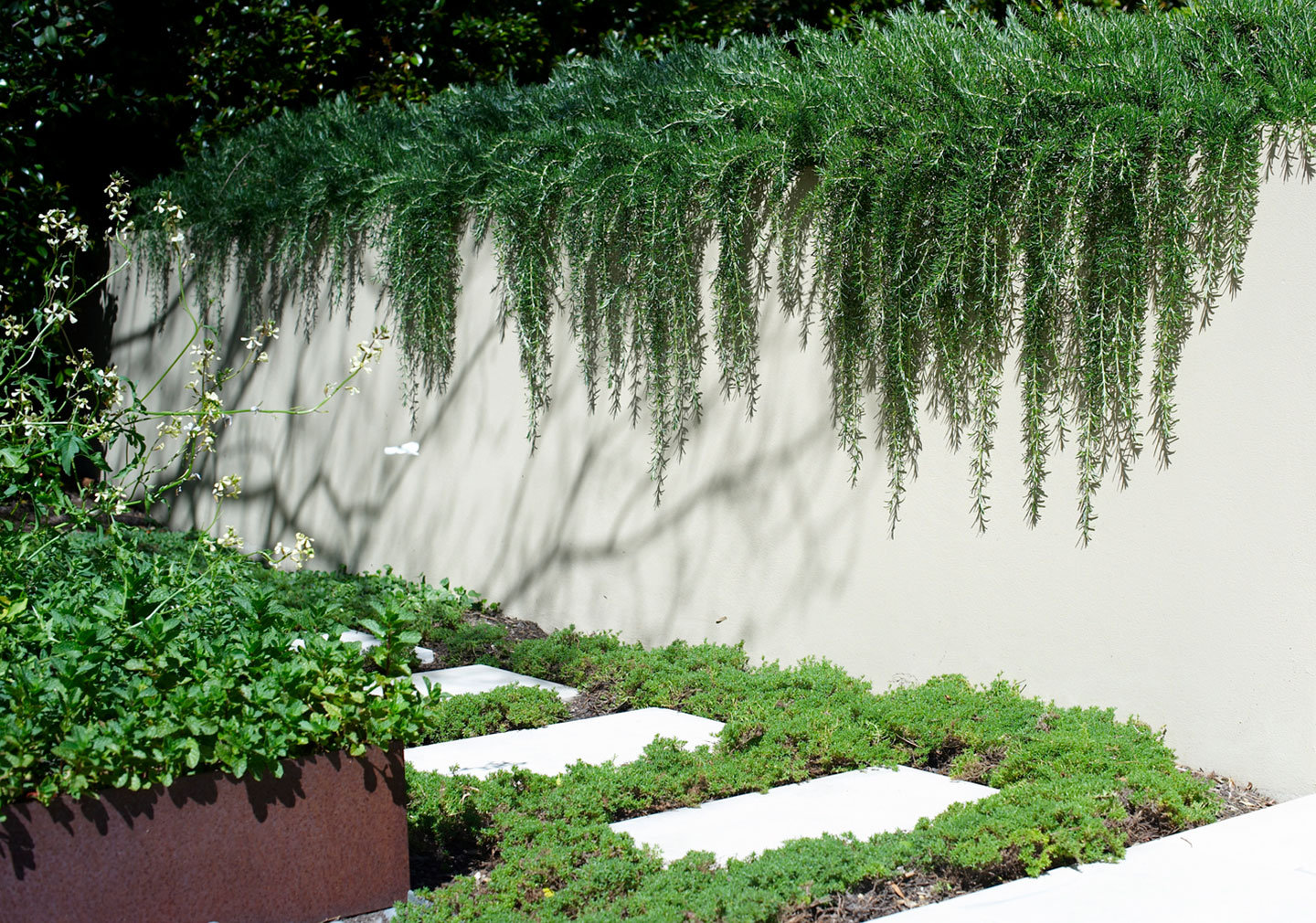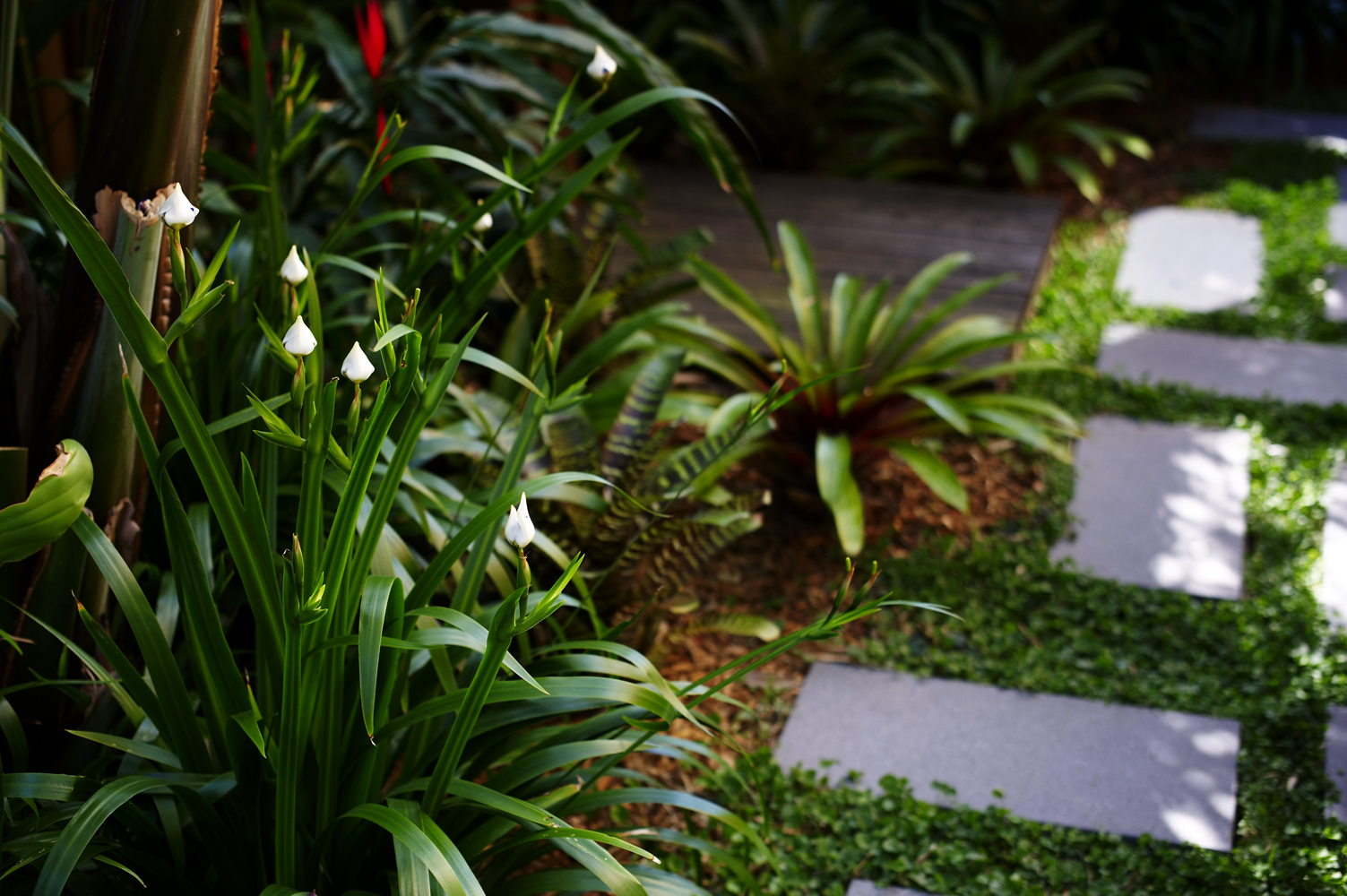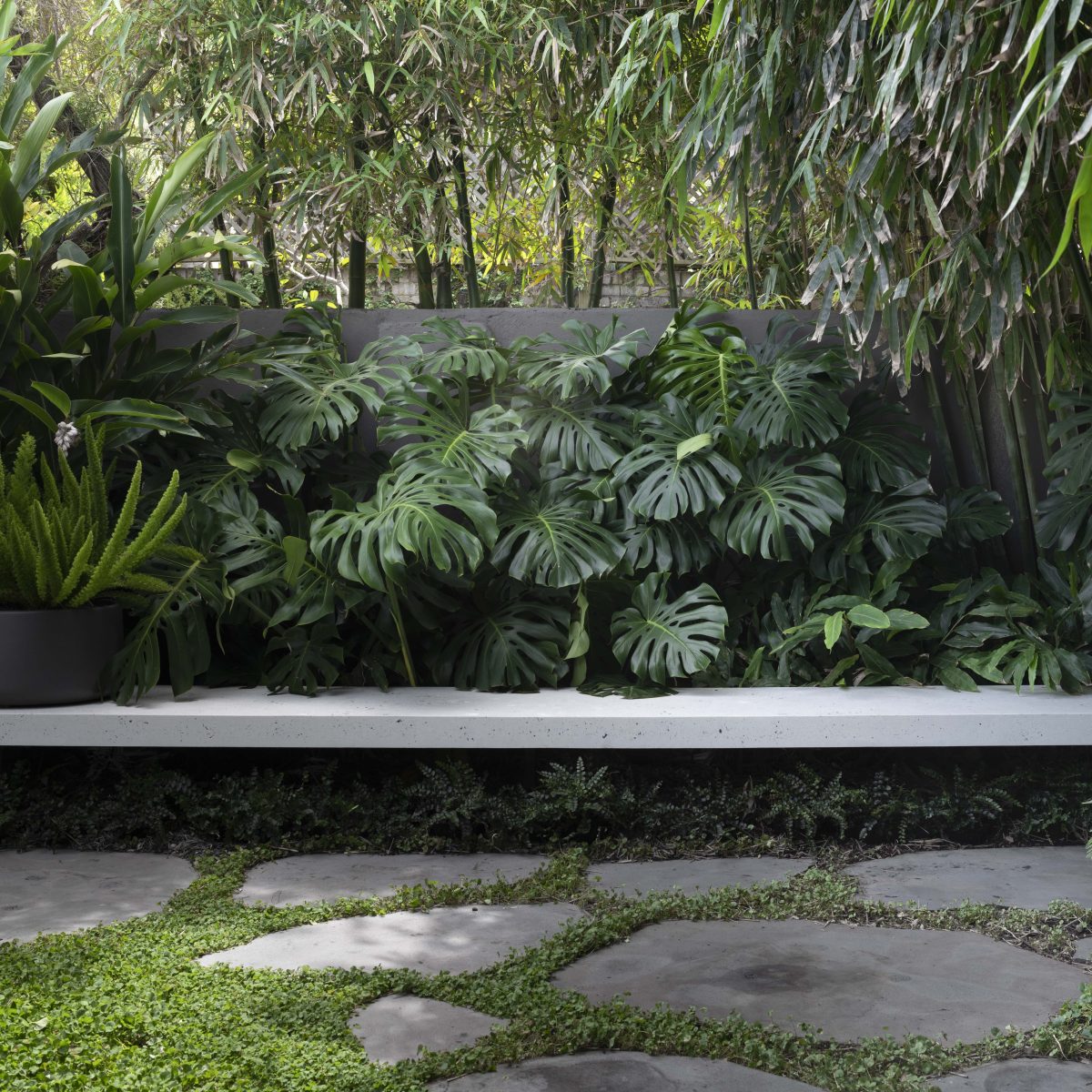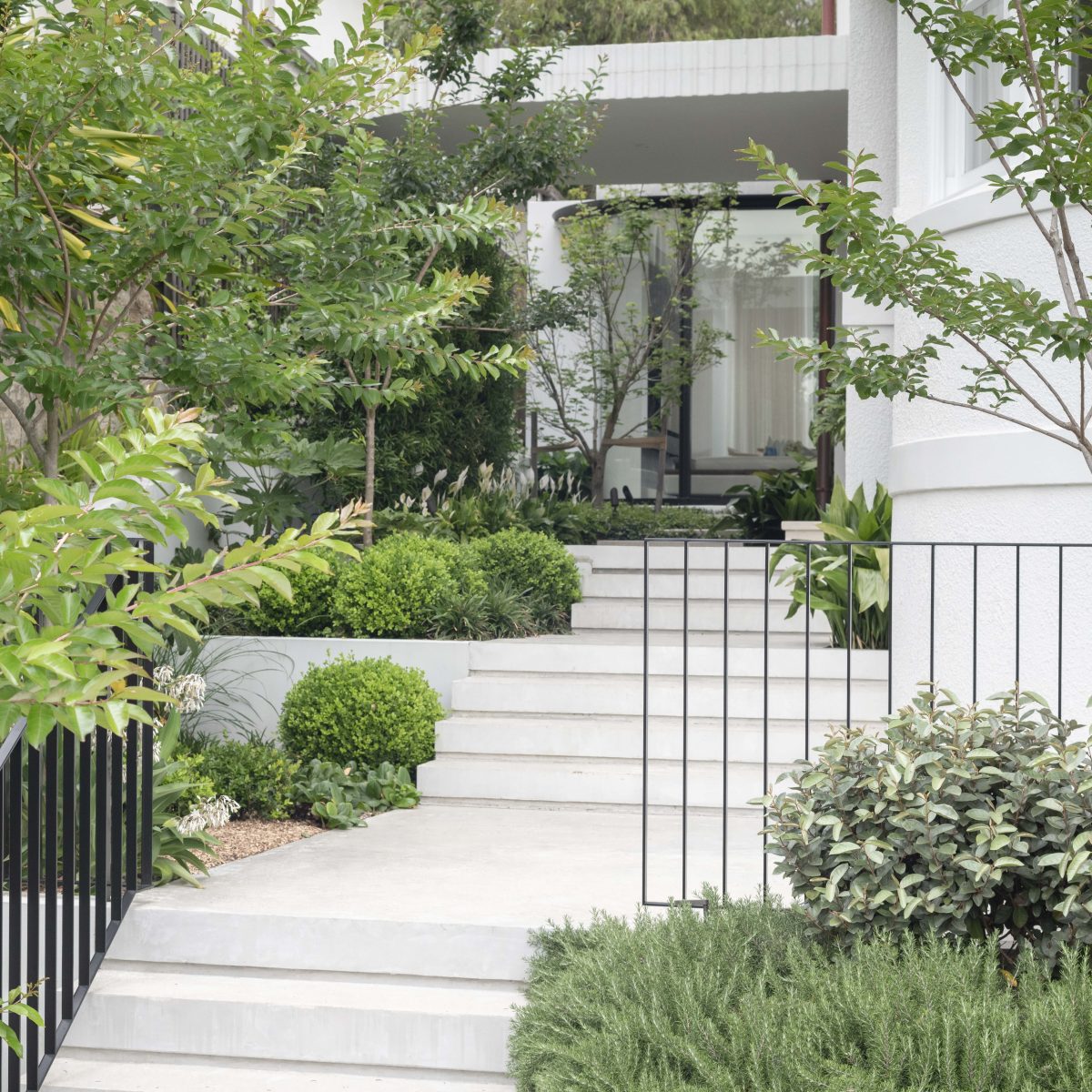Where to use stepping stones
In a purely practical sense, stepping stones are great for creating a slightly more structured path to a highly frequented spot in the garden and saving the lawn from being worn through. Their more whimsical purpose is to, literally, lead you up the garden path; stepping stones can take you on a meandering journey, perhaps to a hidden nook, or else just an aimless wander – the point is the journey rather than the destination.
We’ll often use stepping stones to blur the boundaries between garden and hard surfaces; irregularly shaped pavers with greenery growing up through them are a great way to transition between patio and lawn, for example.
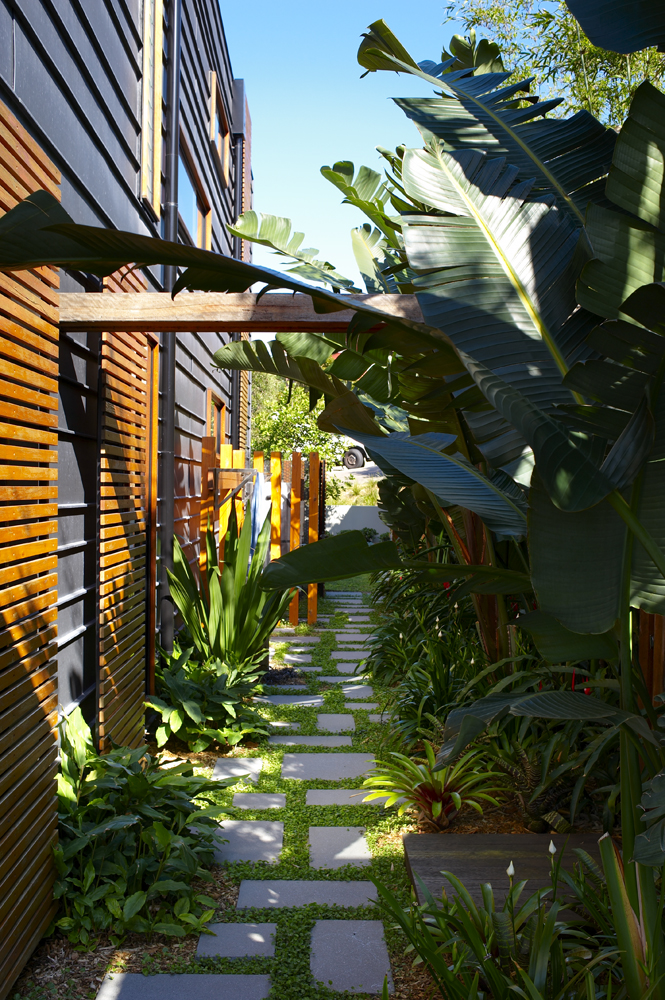
Choosing the right size and shape
The modern trend is definitely towards larger format steppers. We’ll sometimes visit older gardens with smaller – perhaps 400mm x 400mm – pavers and the effect is fussy and often awkward to walk on, forcing you to check your stride to avoid walking between the steps. For a side passage or similar space where you’re just using the path to get from A to B, we’d normally choose a 650mm to 750mm paver, which is about the length of a normal stride. Our favourite size is larger still – 1.2 metres or greater – the antithesis of that old-fashioned fussy style.
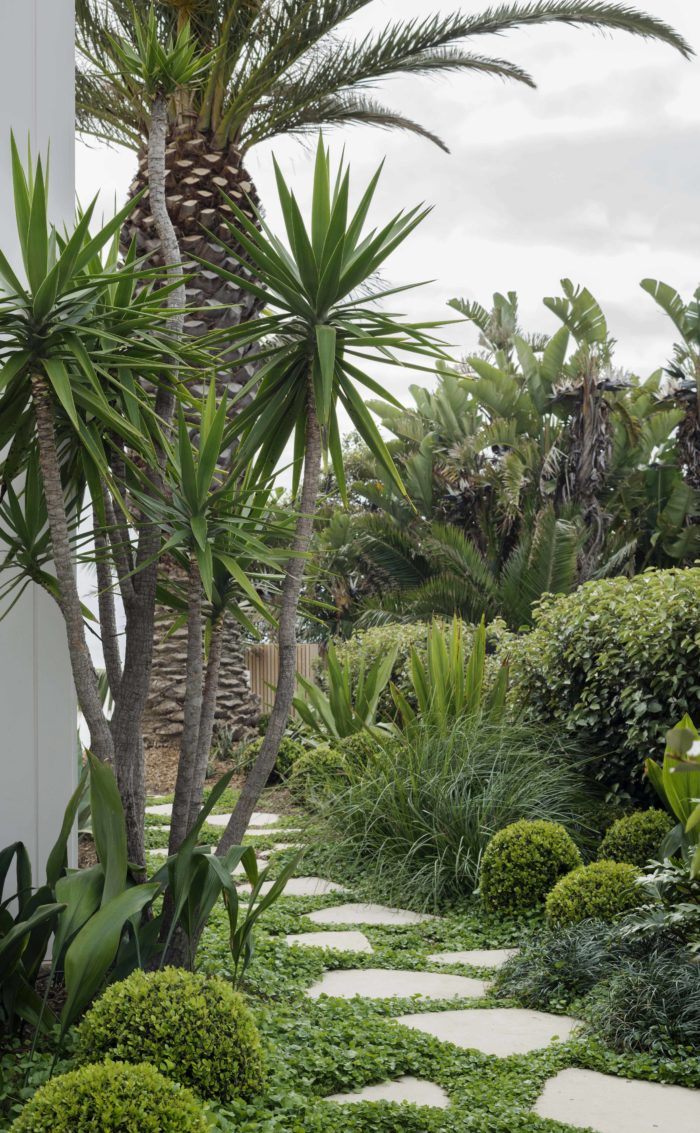
Shapes depend very much on the garden they’re going into and the client’s own tastes. Irregularly shaped flagging scores high on whimsy and allow you to make a more meandering path, so the destination isn’t immediately obvious. On the other hand, geometric shapes – squares and rectangles – definitely have their place, particularly in a more formal garden, though we’ll often mix things up with different sized rectangles to keep it interesting.
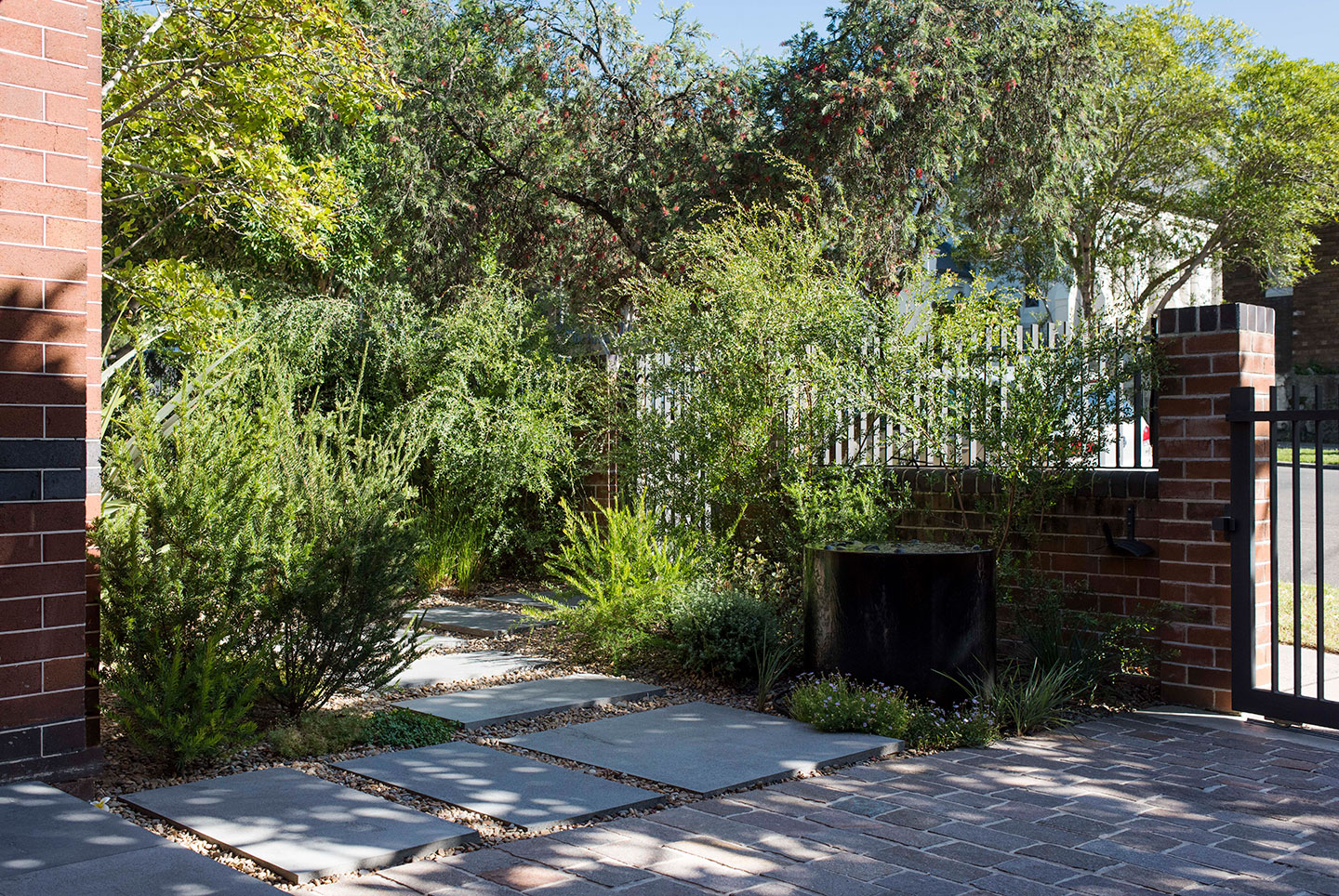
Which materials to use
The choice of potential materials for stepping stones is vast; sandstone or bluestone pavers, concrete (poured onsite or prefabricated), railway sleepers or tiled concrete pads. Every project calls for something a little different.
In between the pavers, the options are almost as endless, though our default preference is usually for more greenery. Lawn can be a bit fiddly to mow, but makes sense if the path is running through turf, while groundcovers like dymondia are dense enough to completely fill the gaps between pavers and look incredible. If something other than greenery is required, perhaps to break up an already lush planting scheme, the options range from pebbles in all colours and sizes, to something fine and sandy looking, like decomposed granite, each of which will provide a different look and feel underfoot.
